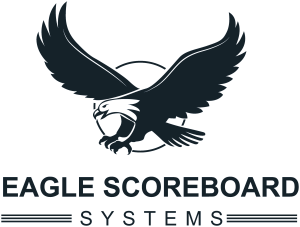Best ball tournaments are a staple of many golf courses, offering players a fun and competitive format that highlights teamwork and individual skill. Scoring these events can be tricky, but with a solid plan, you can make the process smooth and stress-free. Here’s a step-by-step guide to help golf course professionals score a best ball tournament efficiently.
1. Preparing for the Tournament
Preparation is key to a successful scoring process. Before the event begins:
- Provide Clear Instructions: Give players easy-to-follow guidelines on how to fill out their scorecards. Include simple examples that show how to mark gross and net scores. Some tournament organizers even instruct players that only gross scores are allowed on the official scorecard.
- A Designated Area to Display The Scores: Many courses have any area they have designated to display tournament scoring. Whether with a wall-mount scoreboard or a large gathering area with a portable scoreboard, making the score display area easily accessible will start things off on the right foot.
- Organize Your Materials: Get everything ready—scorecards, pens, markers in red, green, and black, and any tech or templates for recording scores.
- Designate Flights: If the tournament is flighted, assign teams to their flights in advance write out names on the corresponding scoreboard or scoresheet. Some tournaments even include what hole they are starting on and each player’s handicap.
2. Interpreting Scorecards
As teams turn in their scorecards, the first step is to read and record scores accurately:
- Check for Consistency: Make sure teams clearly marked their best ball score for each hole, as well as any gross or net totals.
- Watch for Errors: Look for missing holes, unclear markings, or incomplete scores. If anything’s confusing, follow up with the team right away.
3. Verifying Scores
Getting scores right is key to keeping things professional and earning trust:
- Double-Check Entries: As you write or input scores, compare them carefully against the team’s card.
- Collaborate: Have another staff member assist with verifying scores before they’re finalized.
4. Displaying Scores Effectively
An organized display keeps everyone engaged and makes the event more exciting:
- Separate by Flights: Use a full scoreboard or separate sheets to display scores for each flight.
- Alternate Colors: Write scores in alternating colors to make them easier to read, especially when there are lots of teams.
- Space Gross and Net Scores: If you’re showing both gross and net scores, give them enough space so it’s clear. Alignment and uniformity are key to a clear scoresheet.
- Color Code Final Scores: Use red for under par, green for par, and black for over par. This makes scores easy to interpret at a glance and adds a professional touch.
5. Streamlining the Process
Avoid bottlenecks and delays with a few smart workflows:
- Score in Batches: Start recording scores as teams finish, rather than waiting for everyone to turn in their cards. This saves time at the end.
- Prepare in Advance: Expect peak times when scores come in and have extra hands ready to help.
6. Announcing Winners
Make sure everyone knows who earned what:
- Define Categories: Clearly outline who’s being recognized—overall gross and net champions, plus winners in each flight.
- Highlight Results: Use bold or enlarged text to make the winners stand out on the scoreboard.
- Celebrate Publicly: Announce winners at the awards ceremony and share results on your website or social media to keep the excitement going.
7. Post-Tournament
After the tournament, keep the momentum going:
- Review the Scoring Process: Take time to analyze what went well and identify any areas where scoring could be streamlined or sped up. Did scorecards cause confusion? Was there a bottleneck at score entry? Make notes for future events.
- Gather Feedback from Staff: Talk to your team to hear their observations and suggestions for improvement. Sometimes small changes, like adjusting workflows or providing clearer instructions, can make a big difference.
- Evaluate Timing: Review how long it took to collect, verify, and display scores. Were there delays? Consider strategies like batching score entry or increasing staff during peak times.
- Document Best Practices: Record any successful strategies or tools used during the event so they can be replicated next time.
Final Thoughts
Scoring a best ball tournament doesn’t have to be overwhelming. With clear communication, efficient organization, and attention to detail, you can deliver a seamless experience for players while keeping the event running smoothly. By following these best practices, you’ll not only get the scoring right but also leave a great impression that brings participants back for more.
